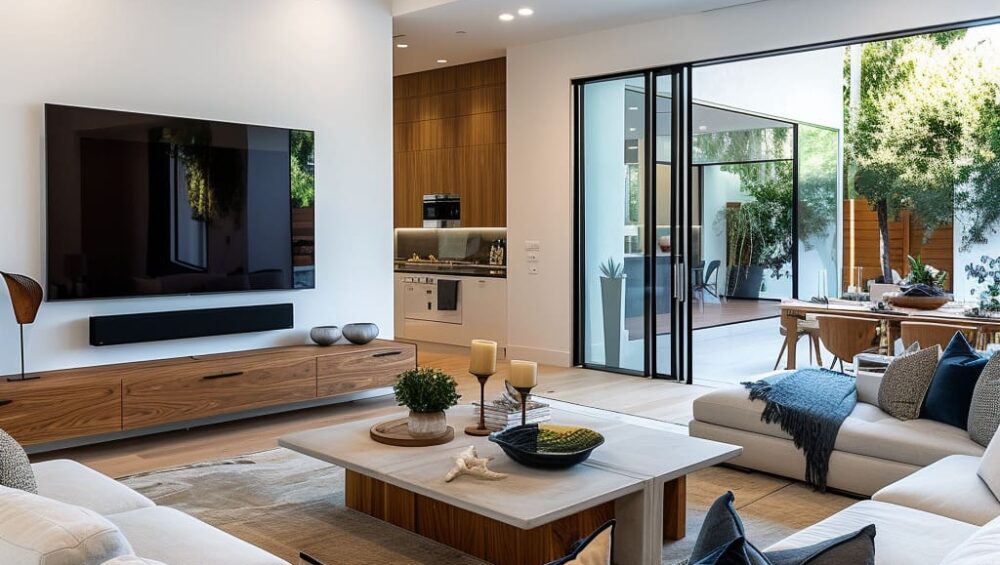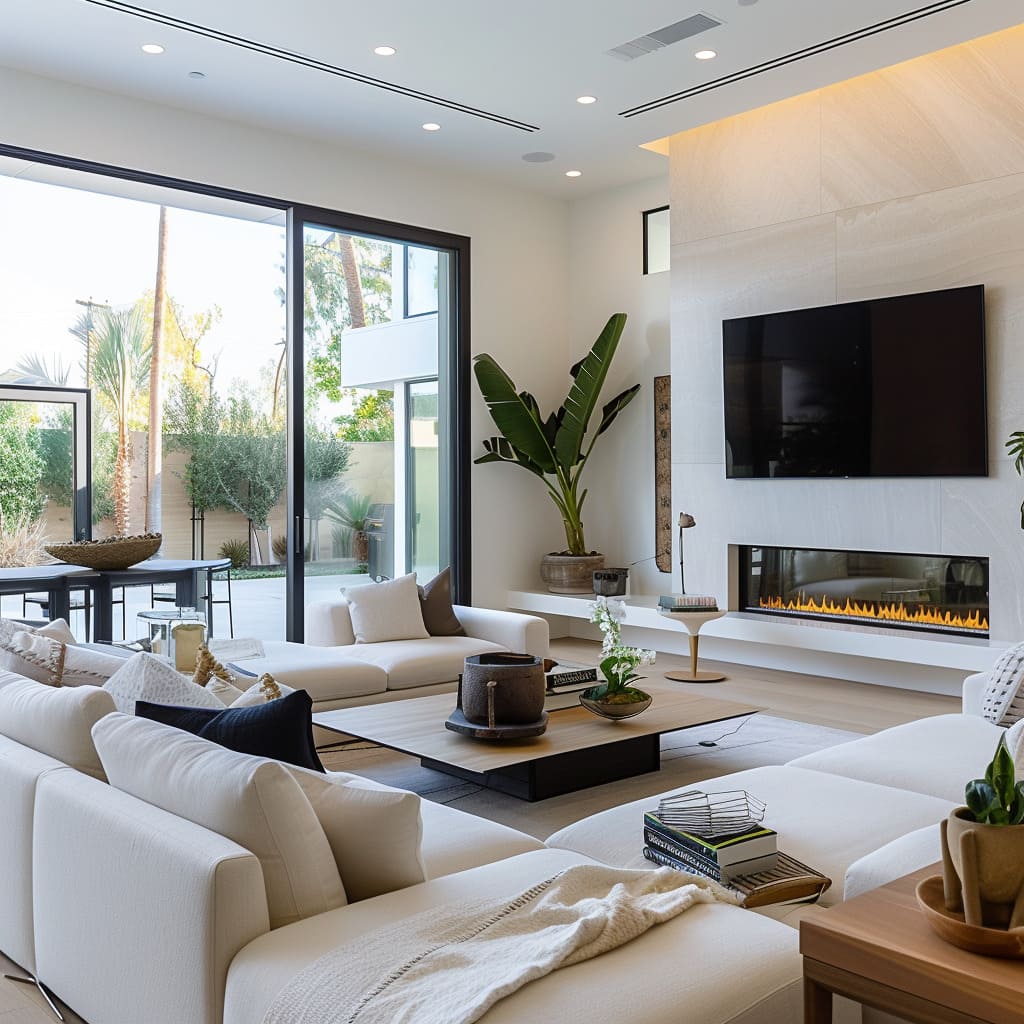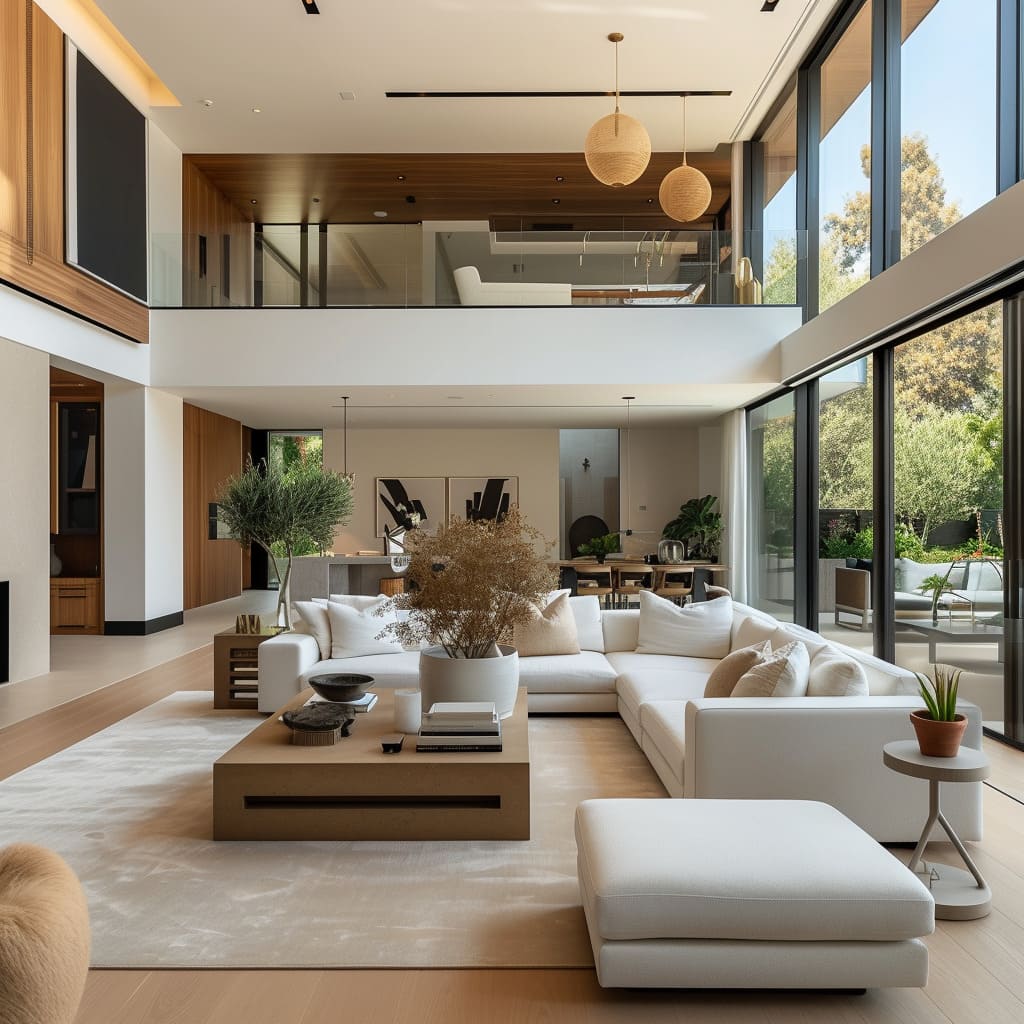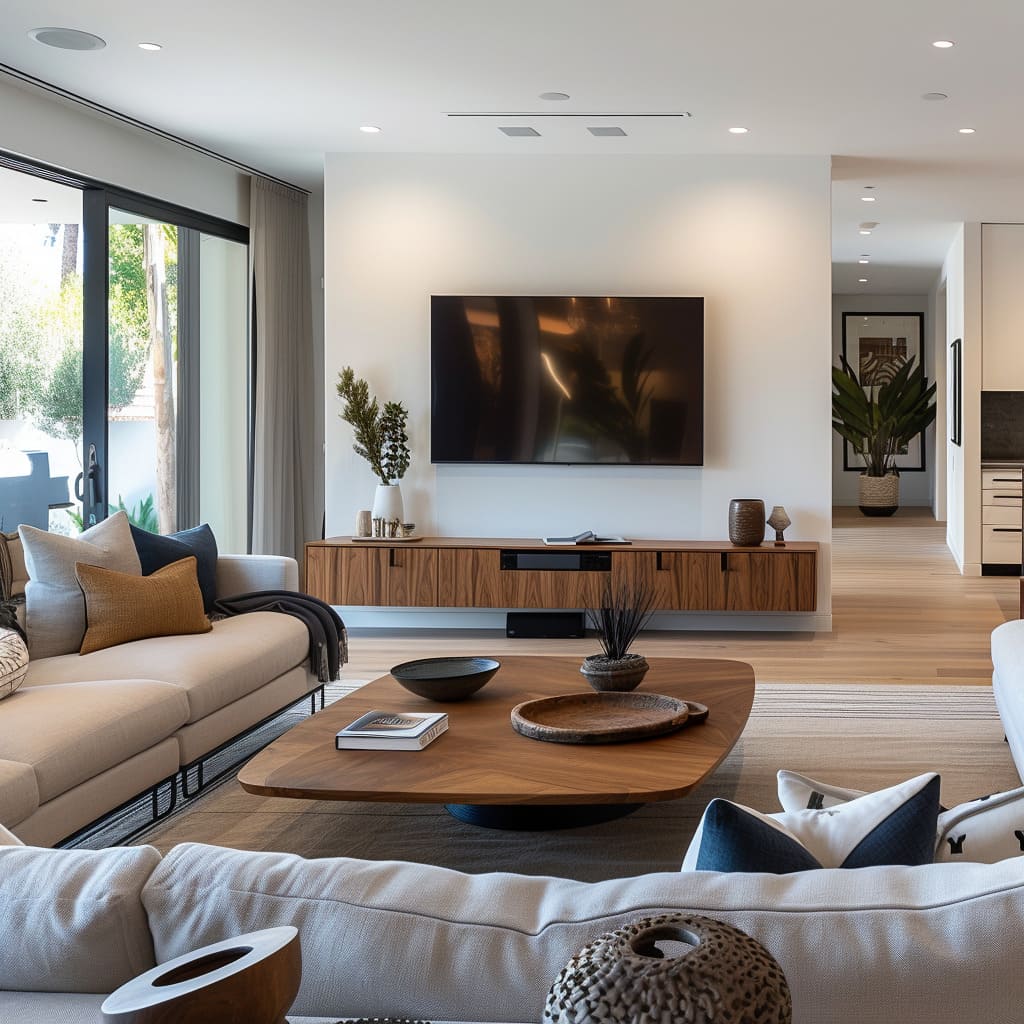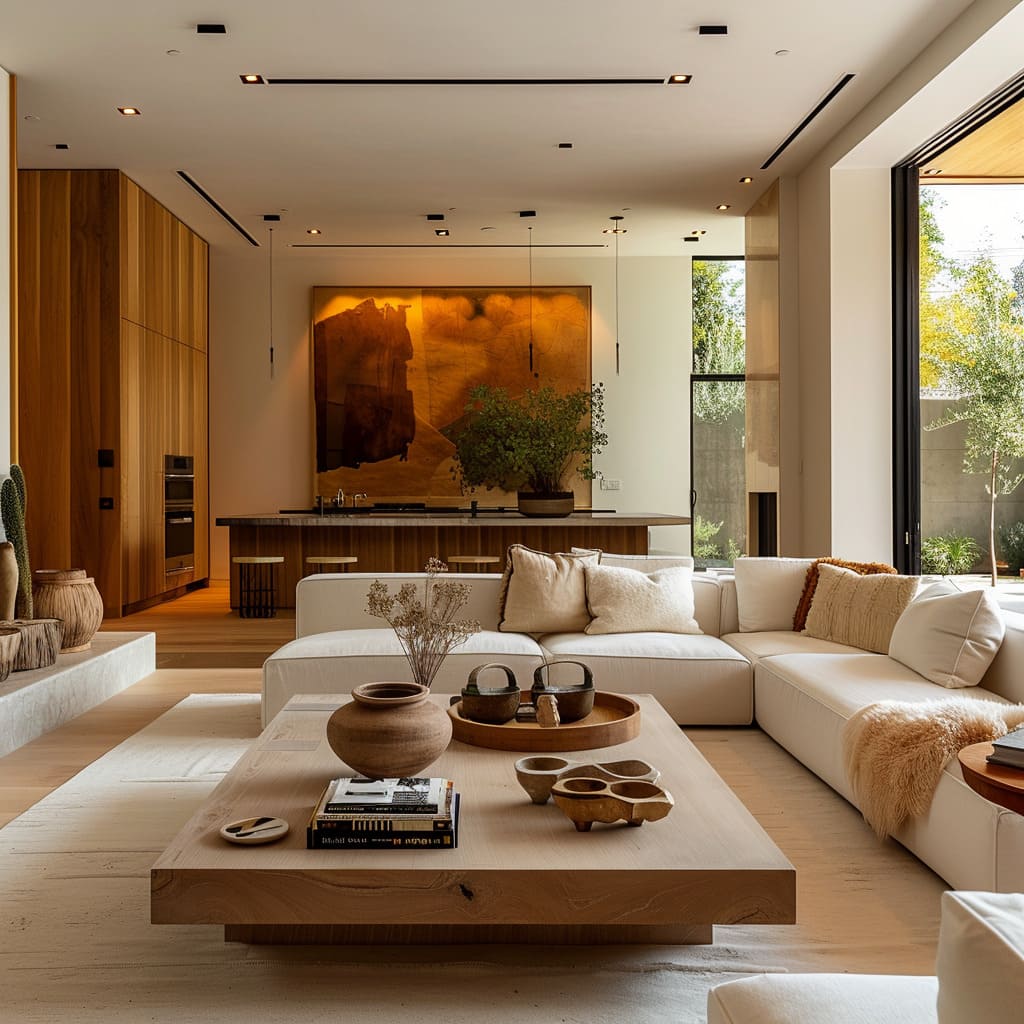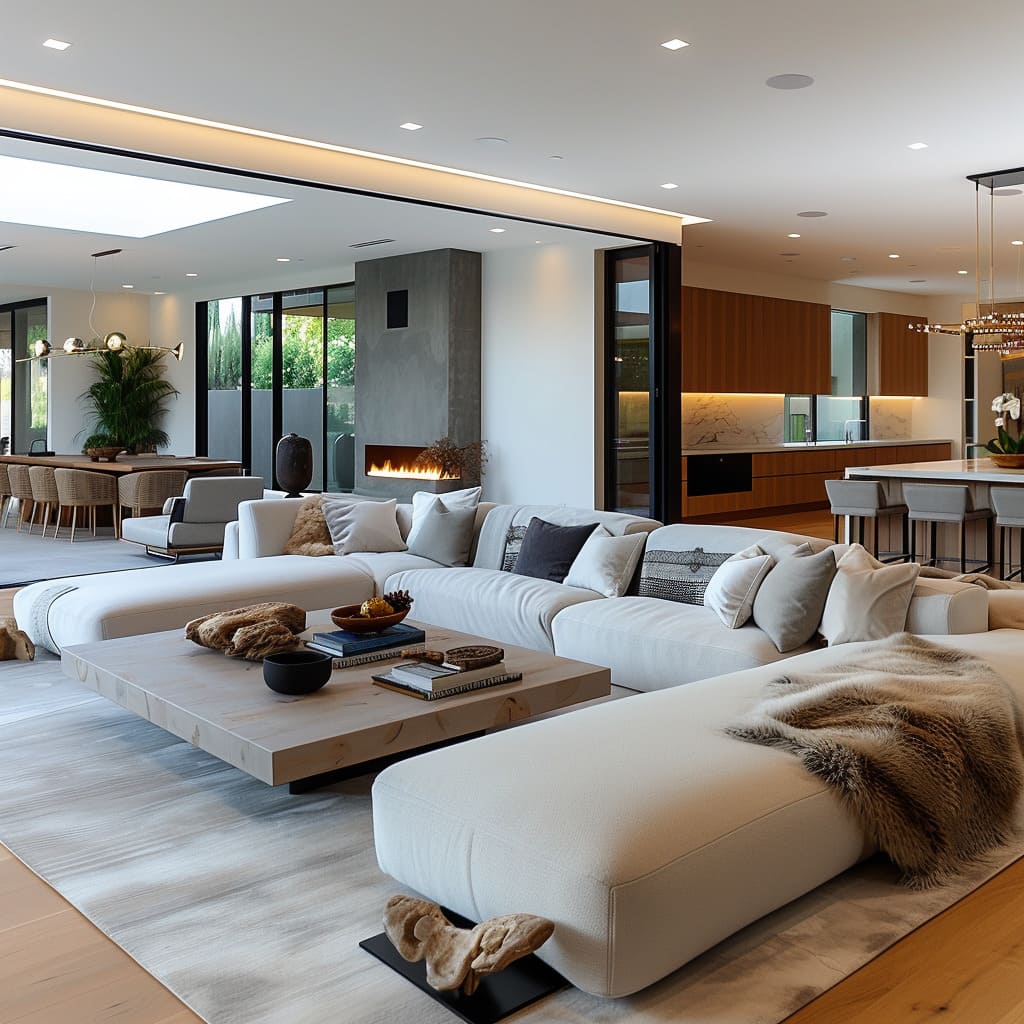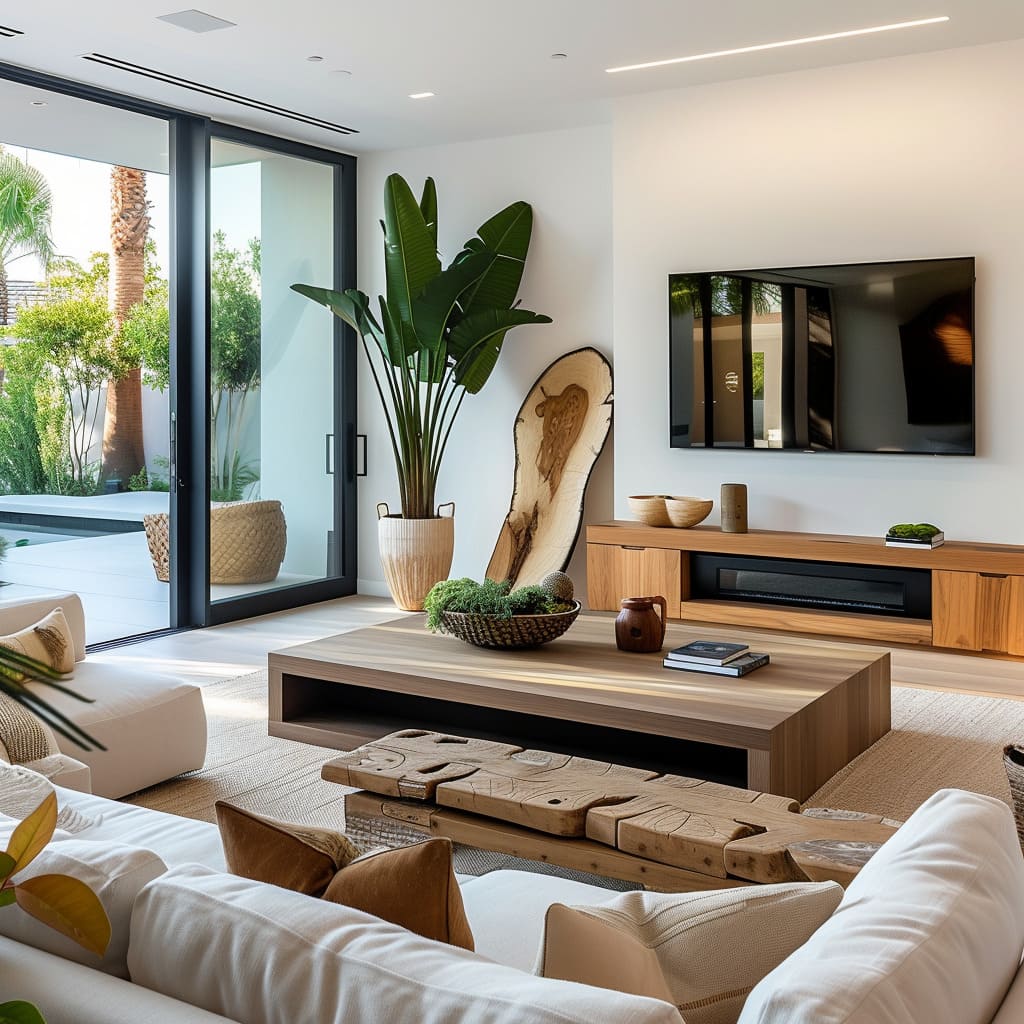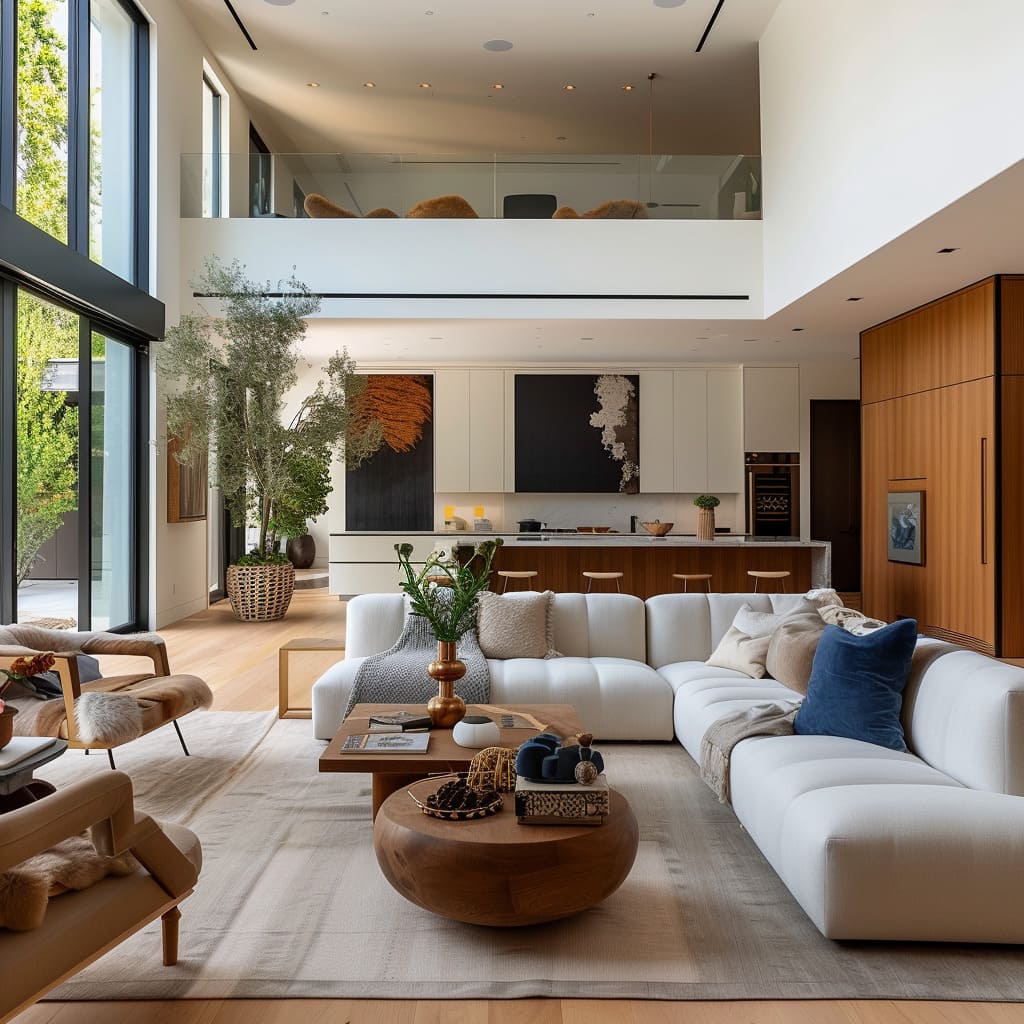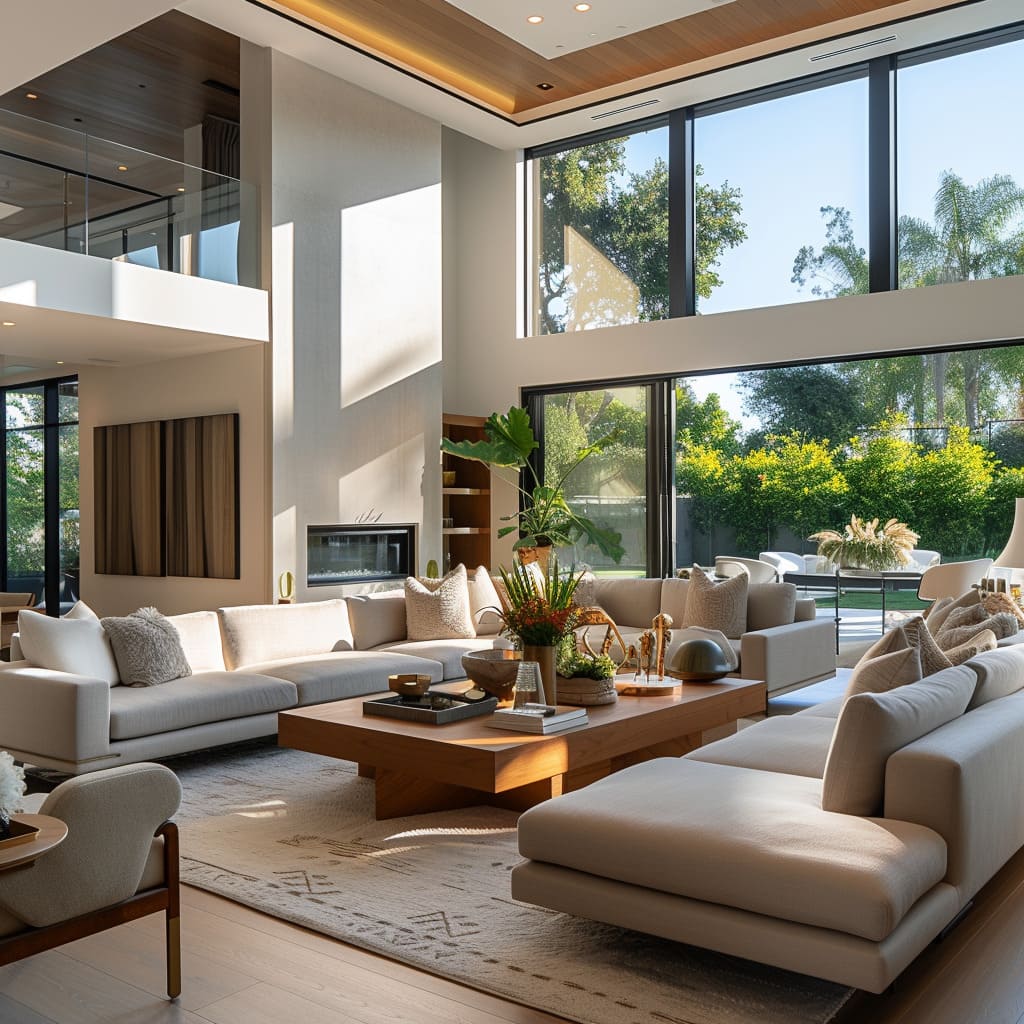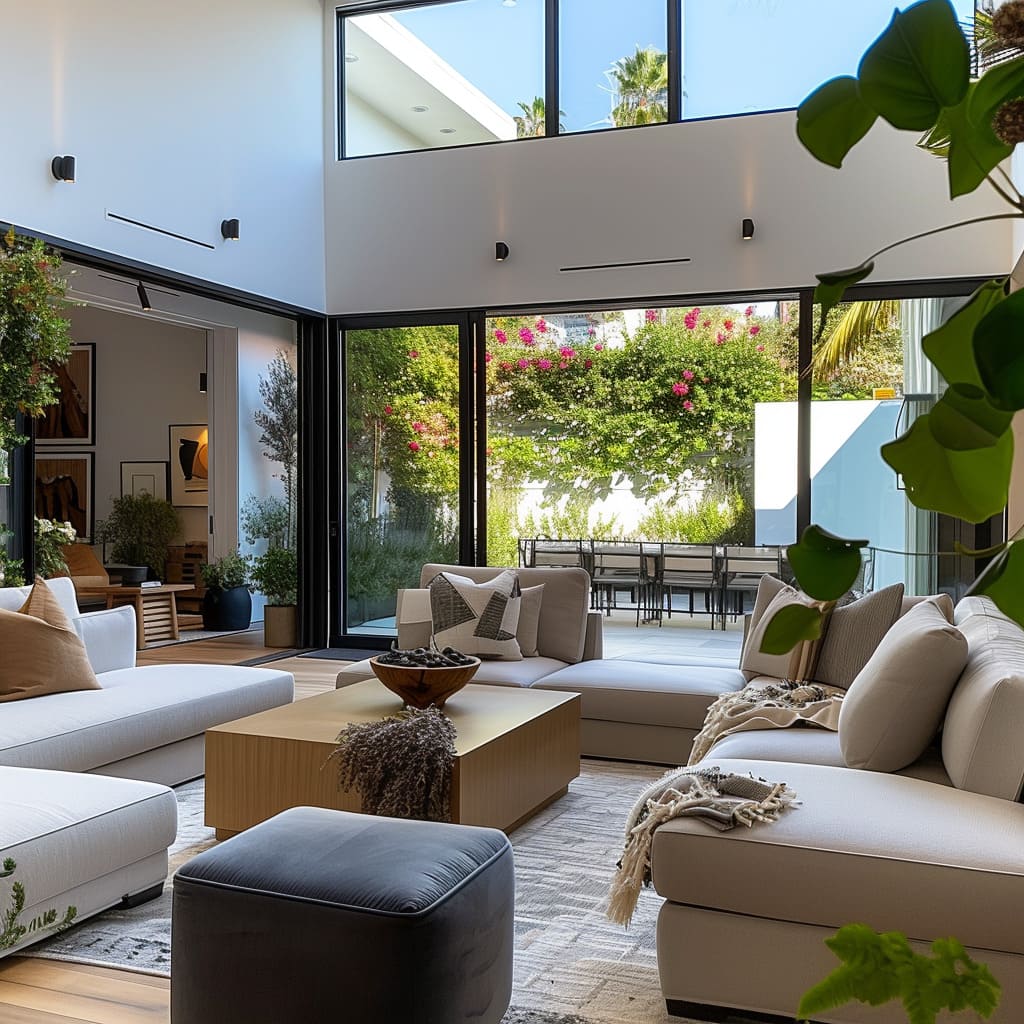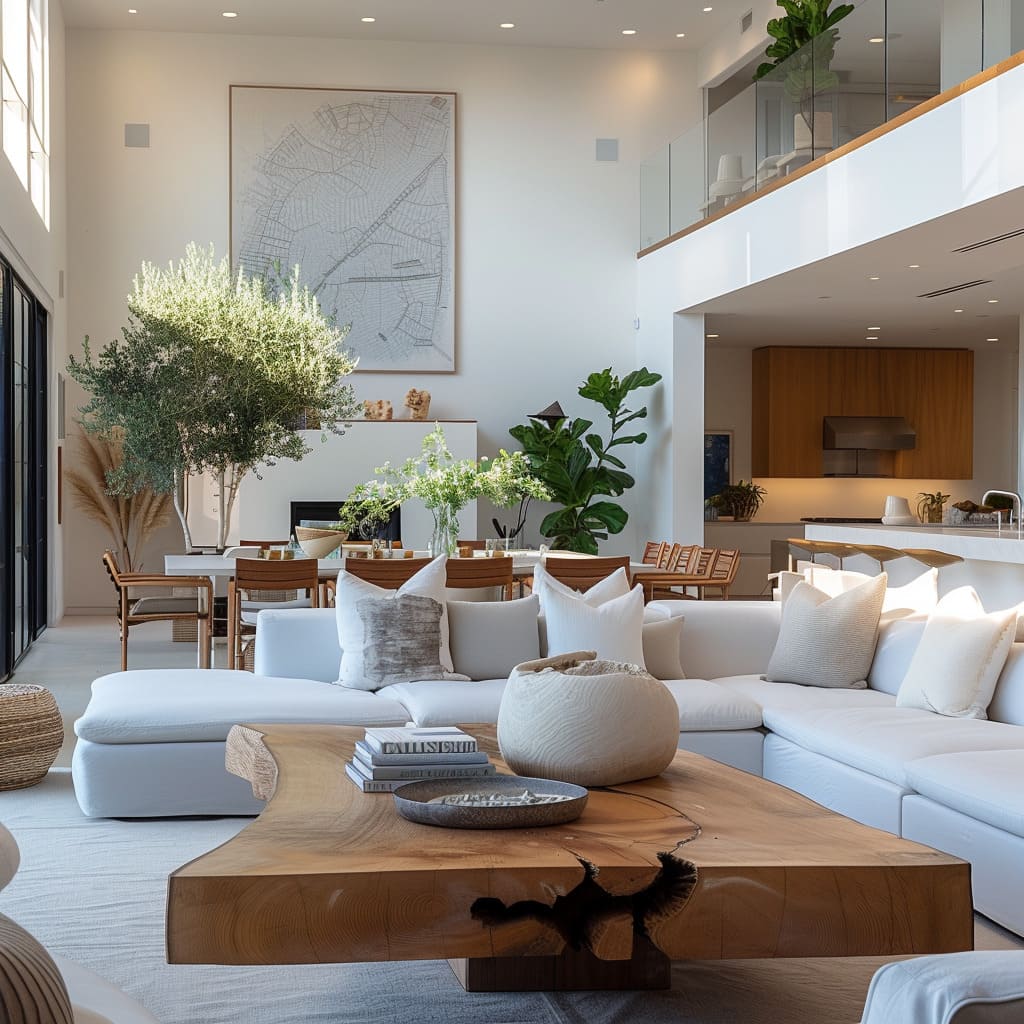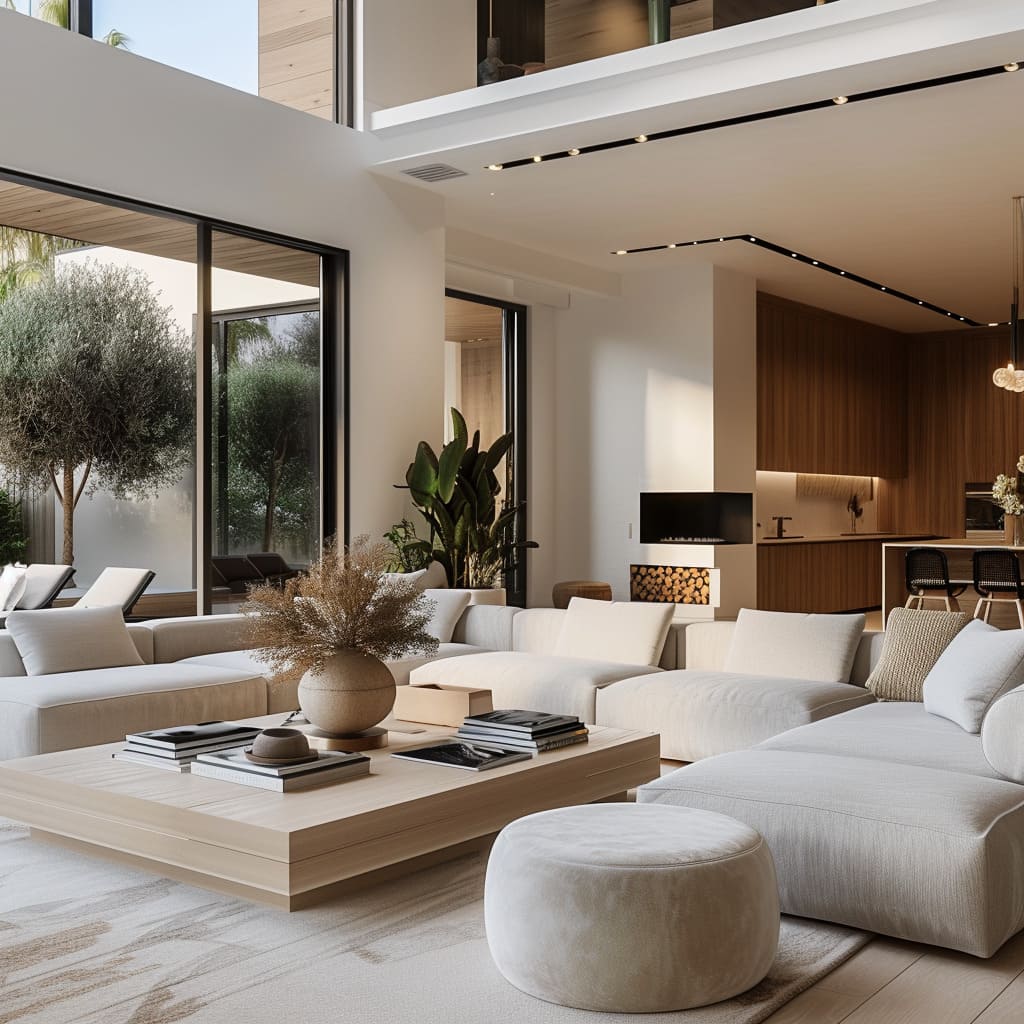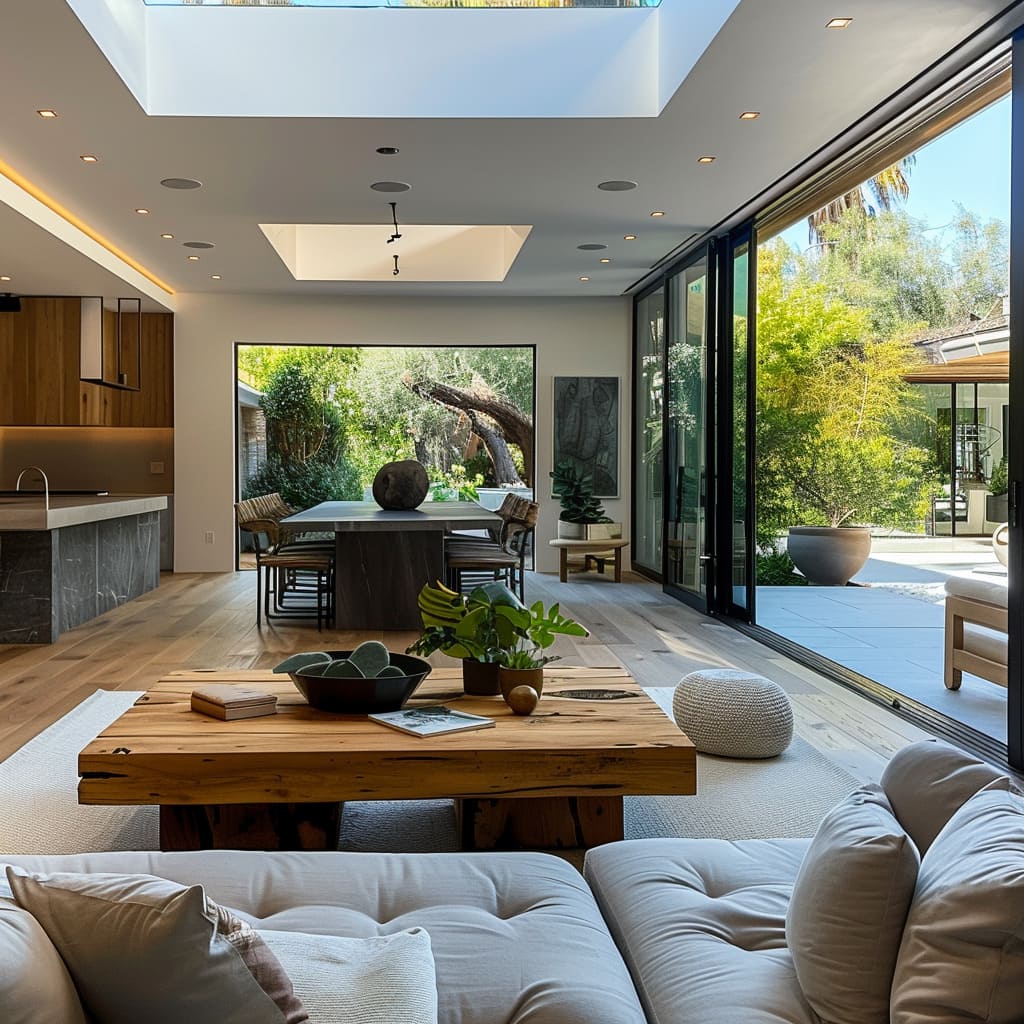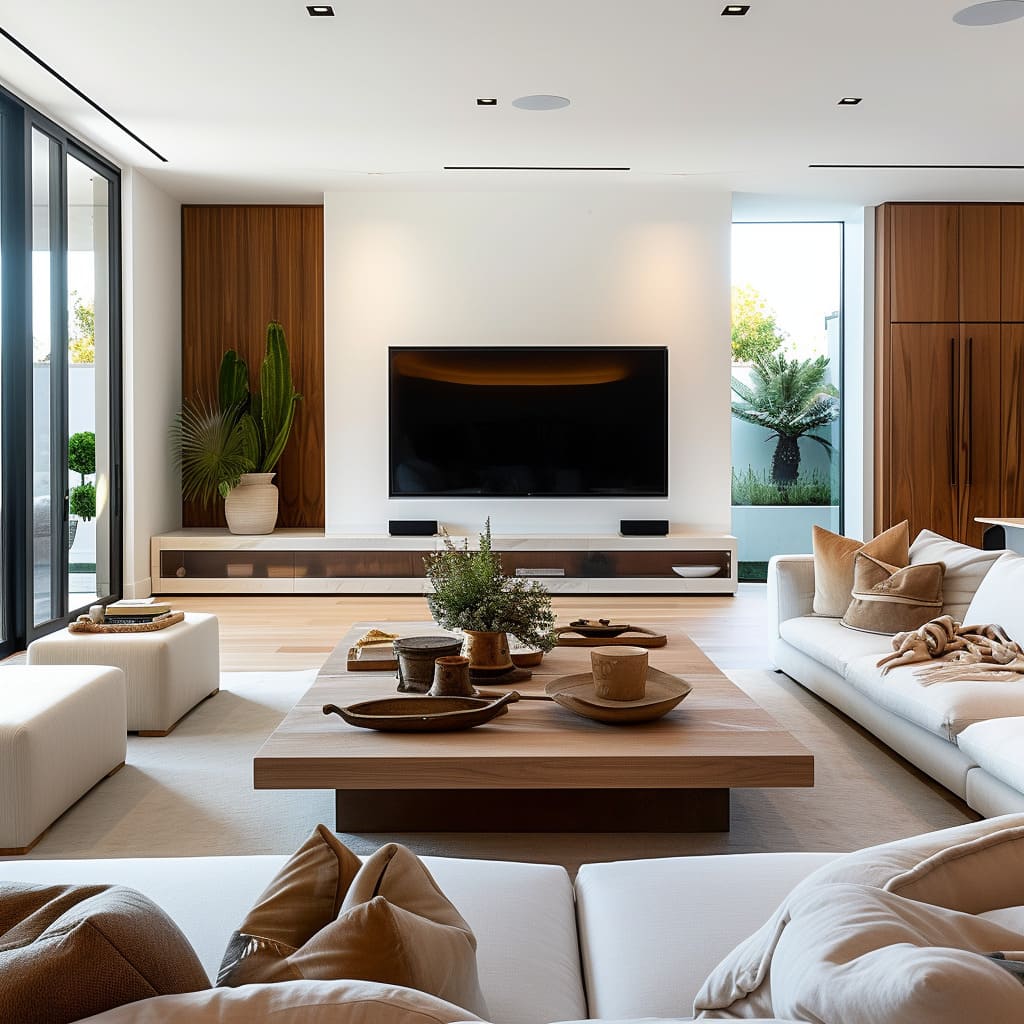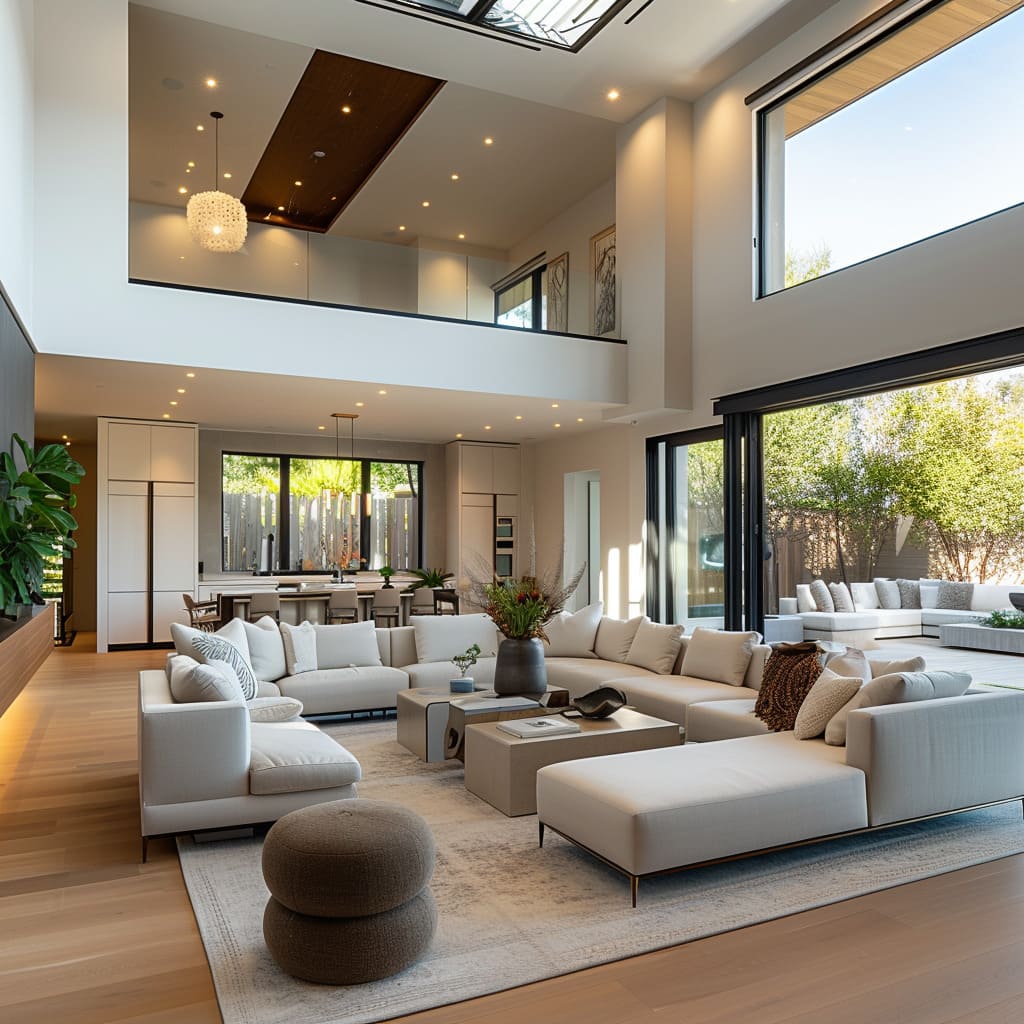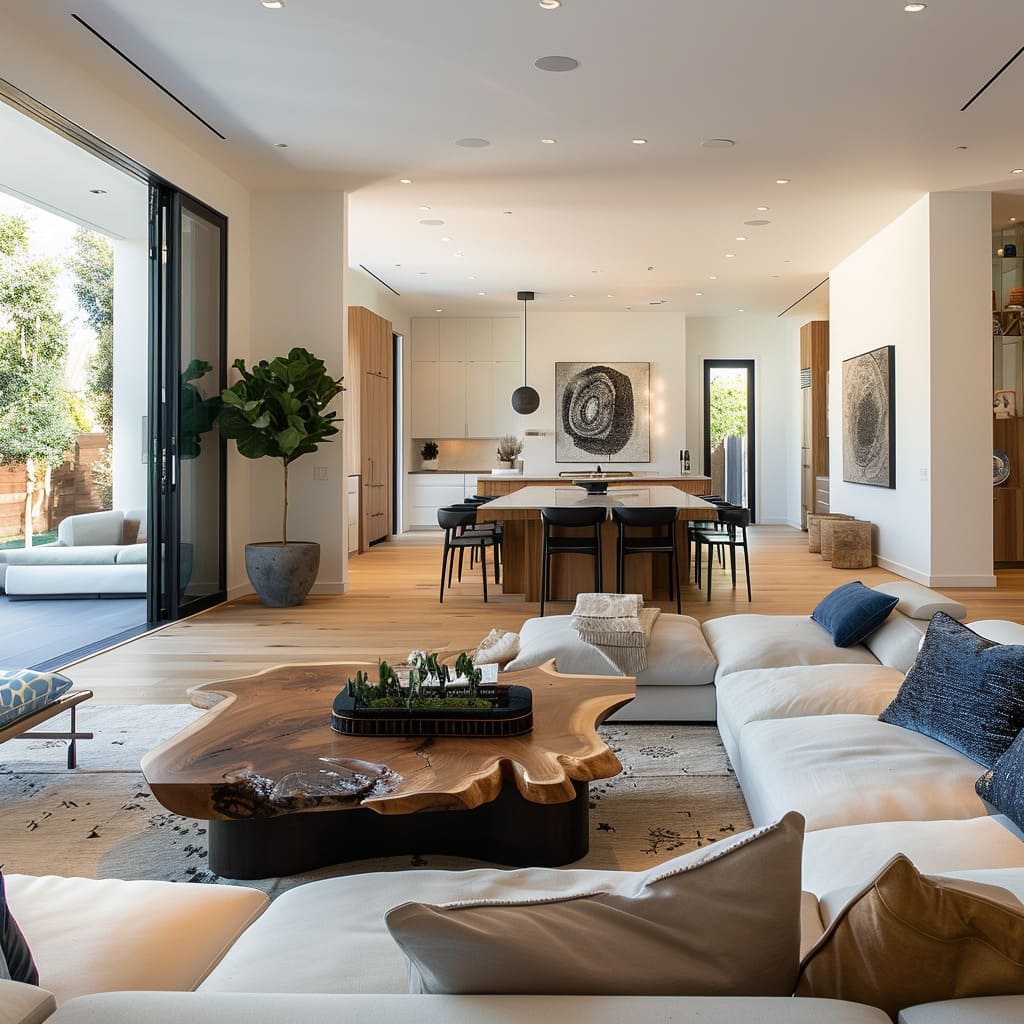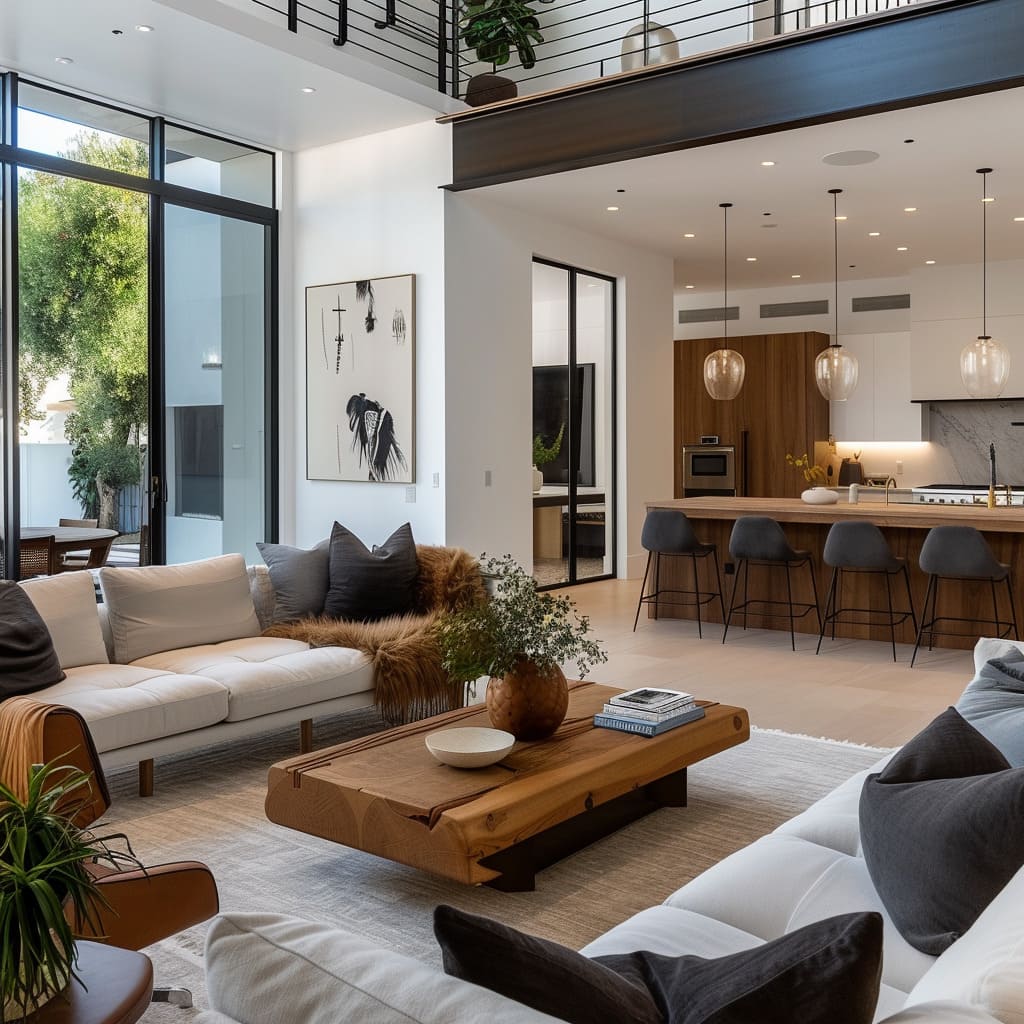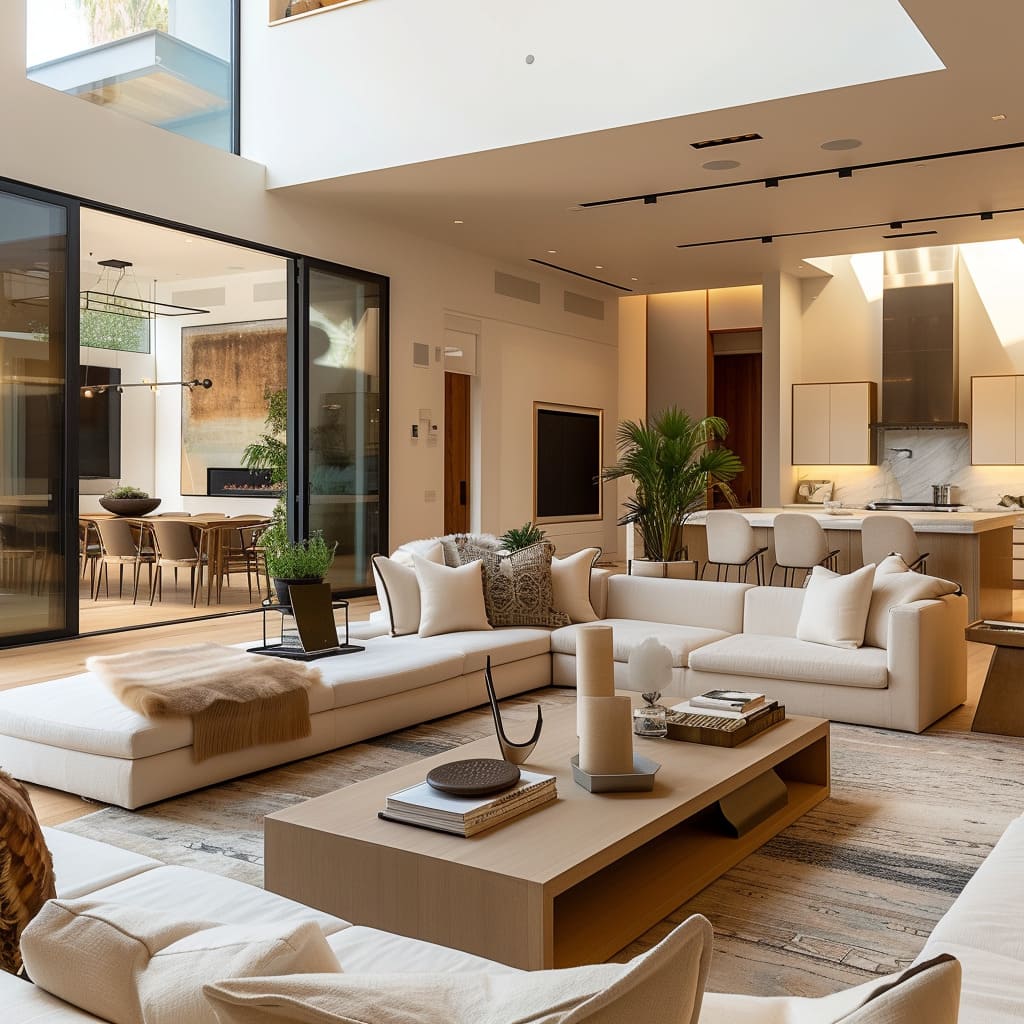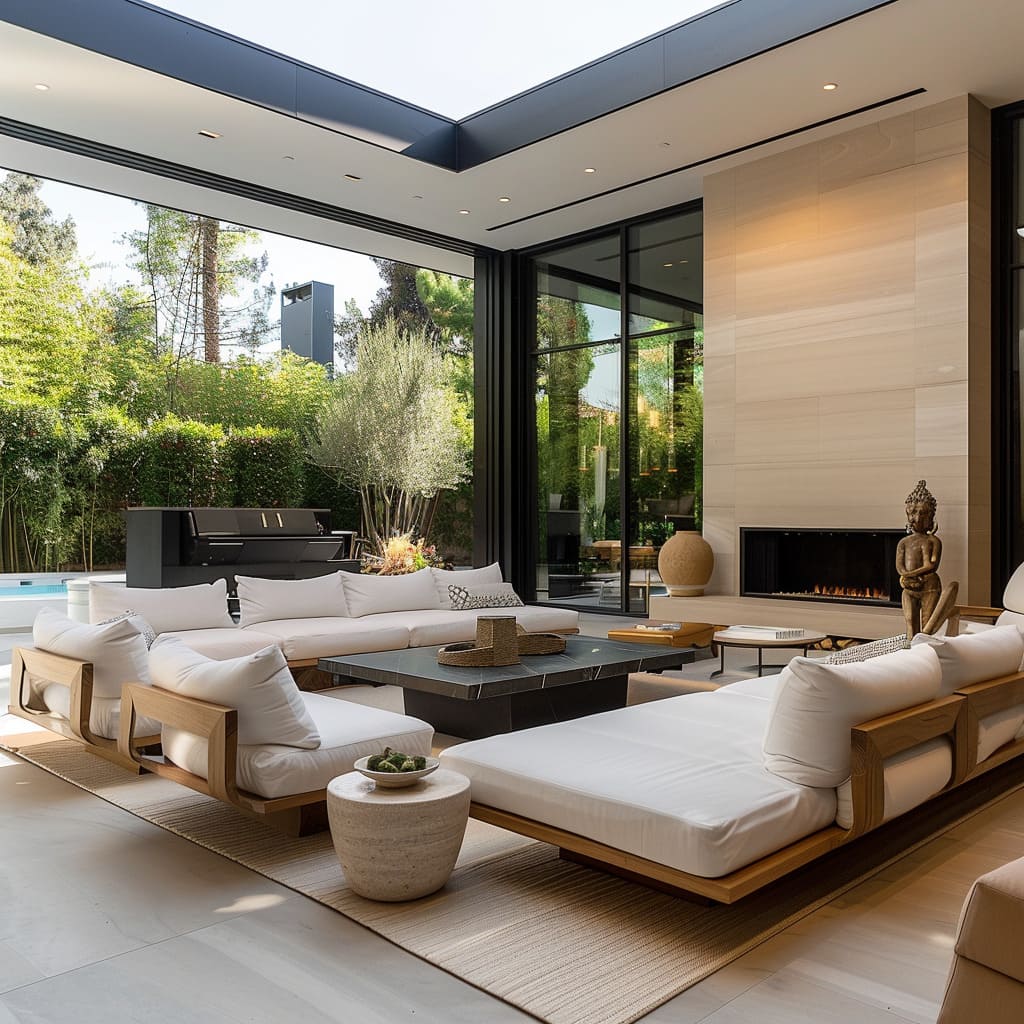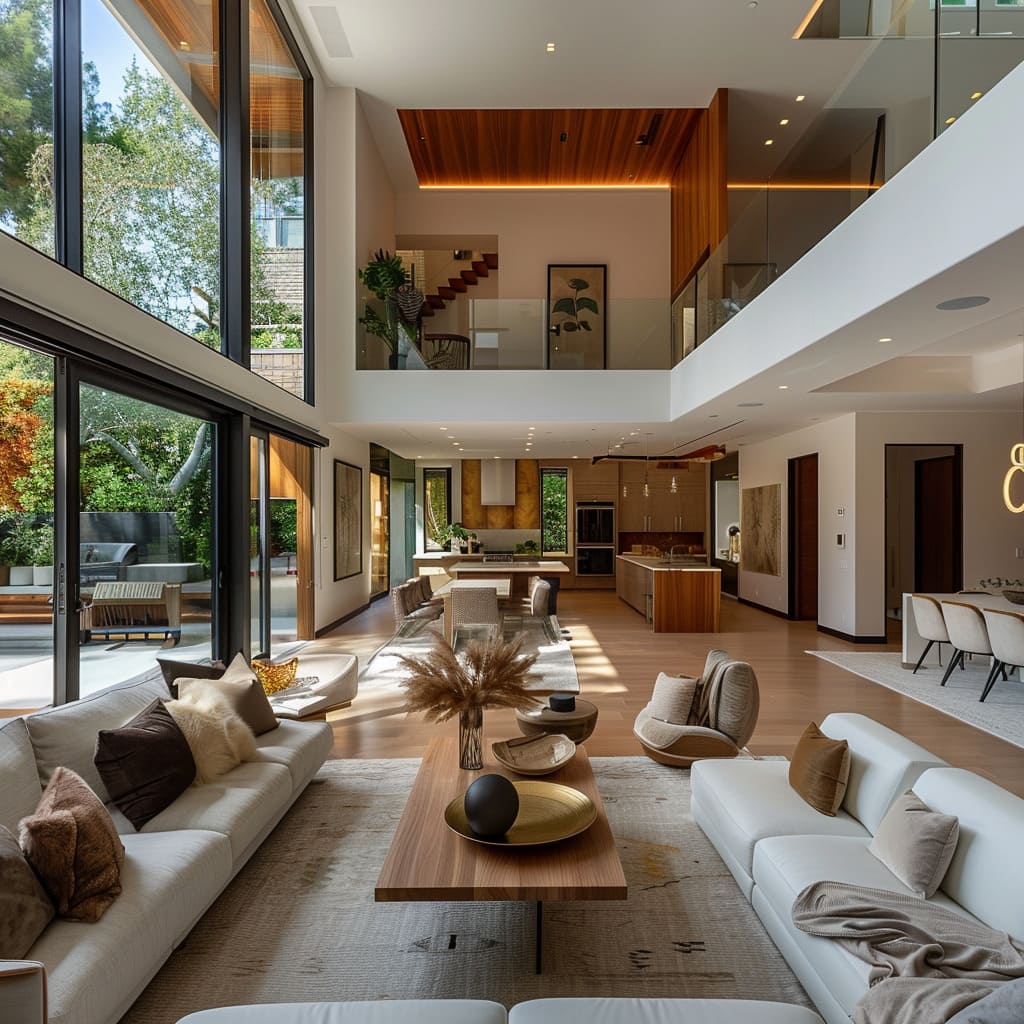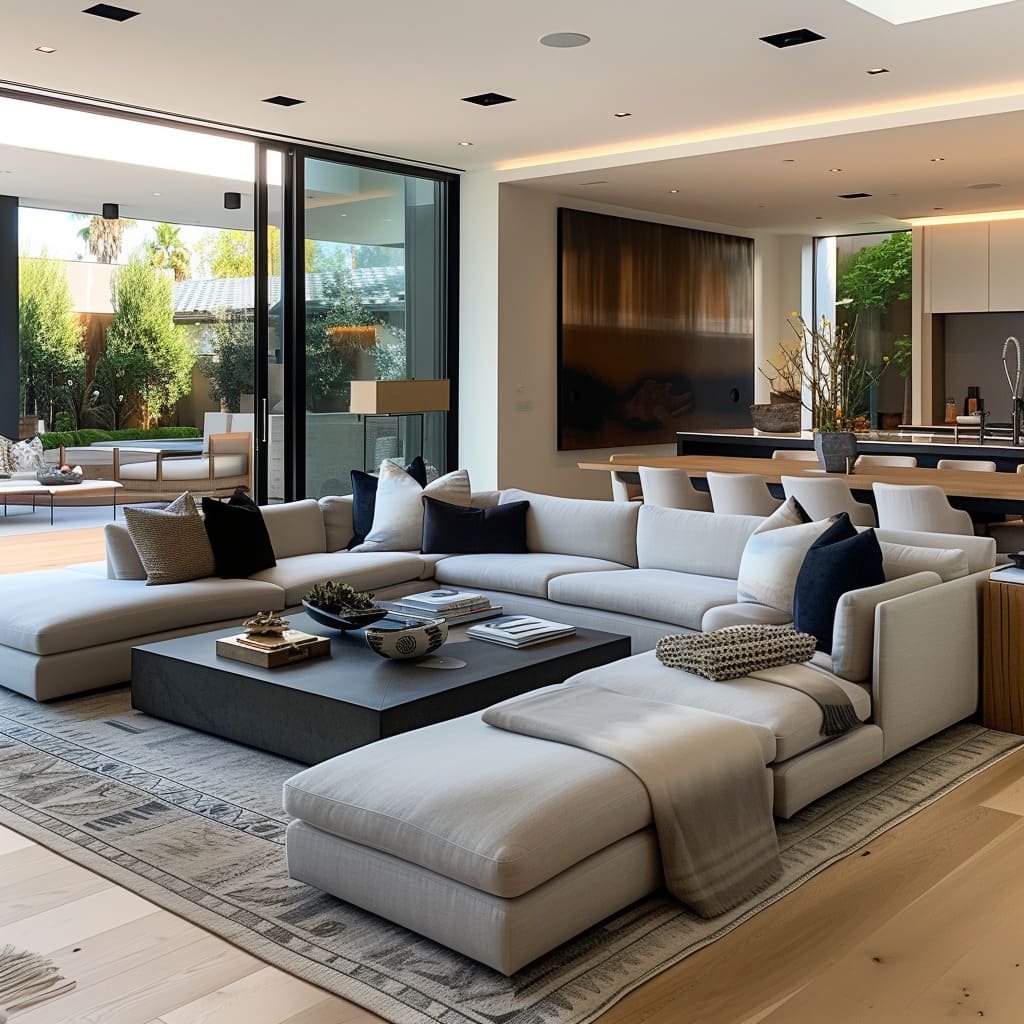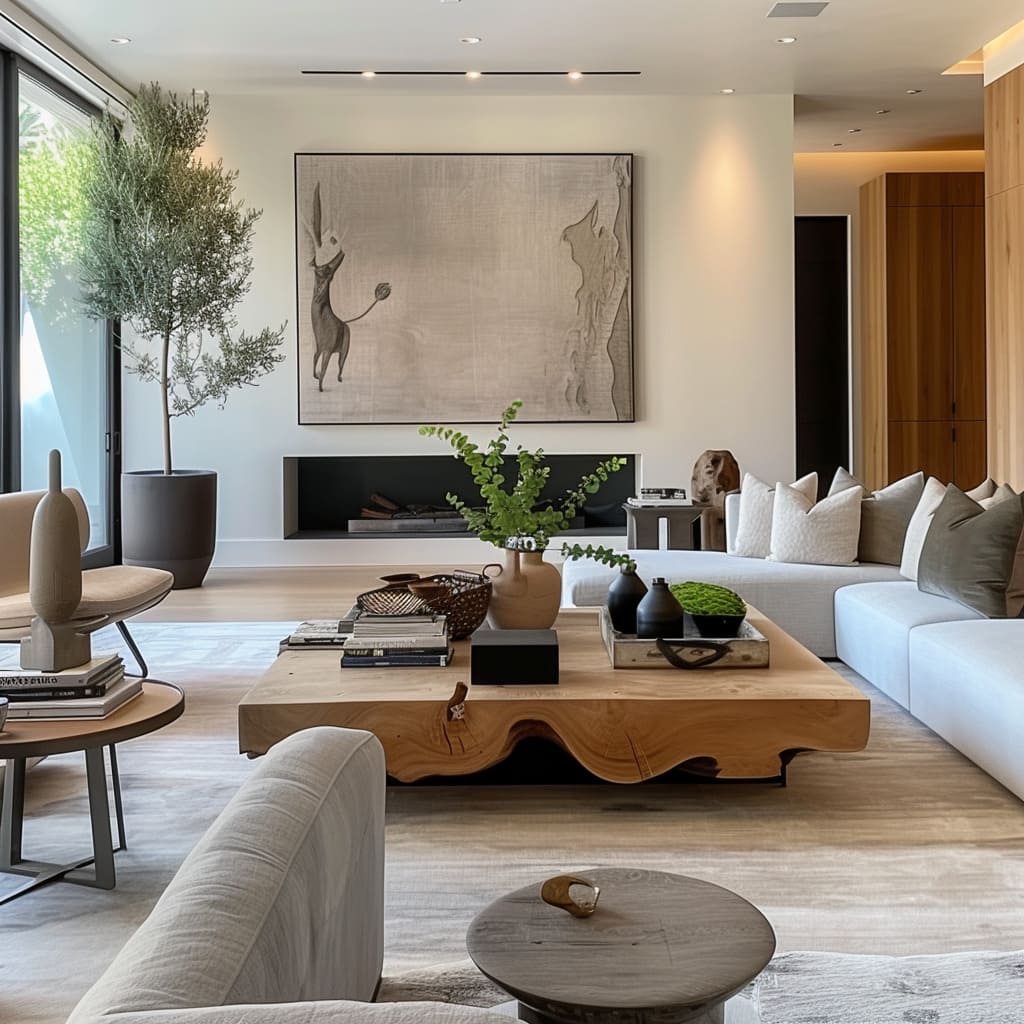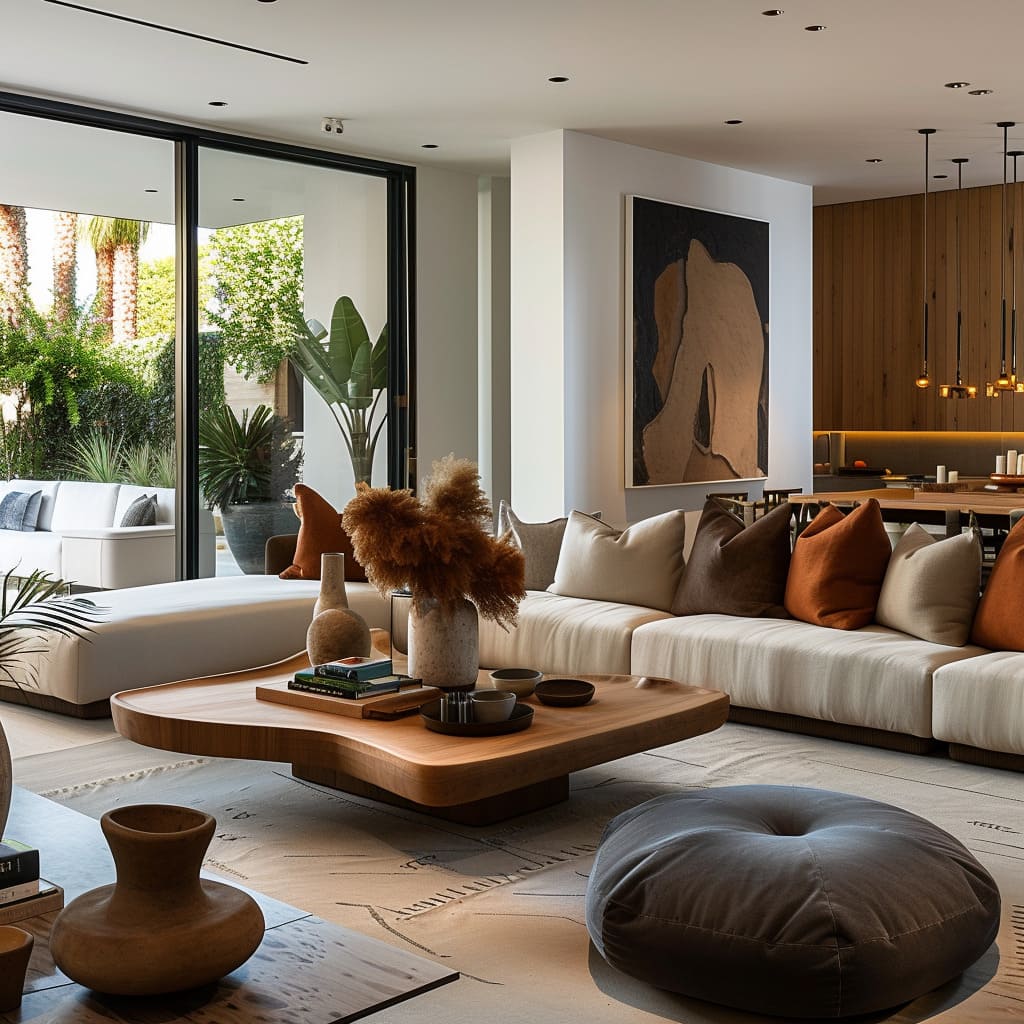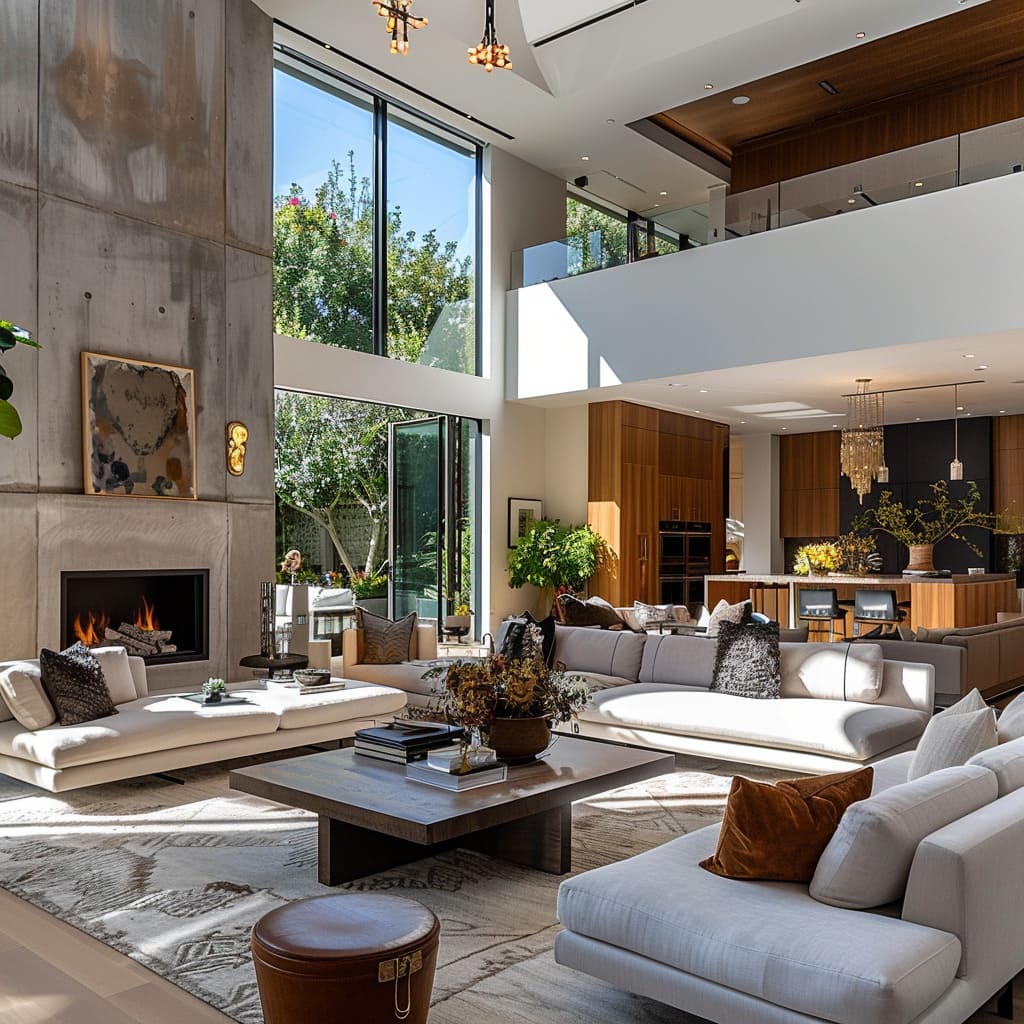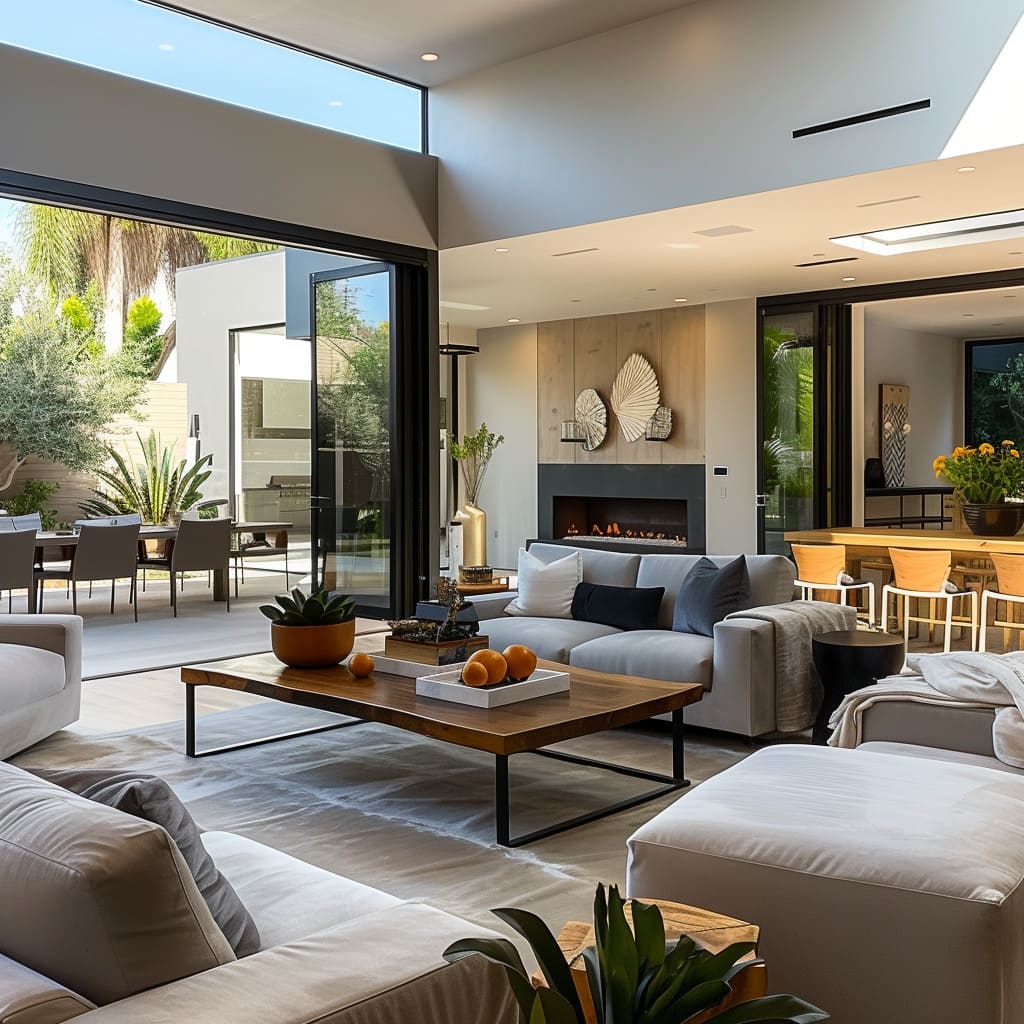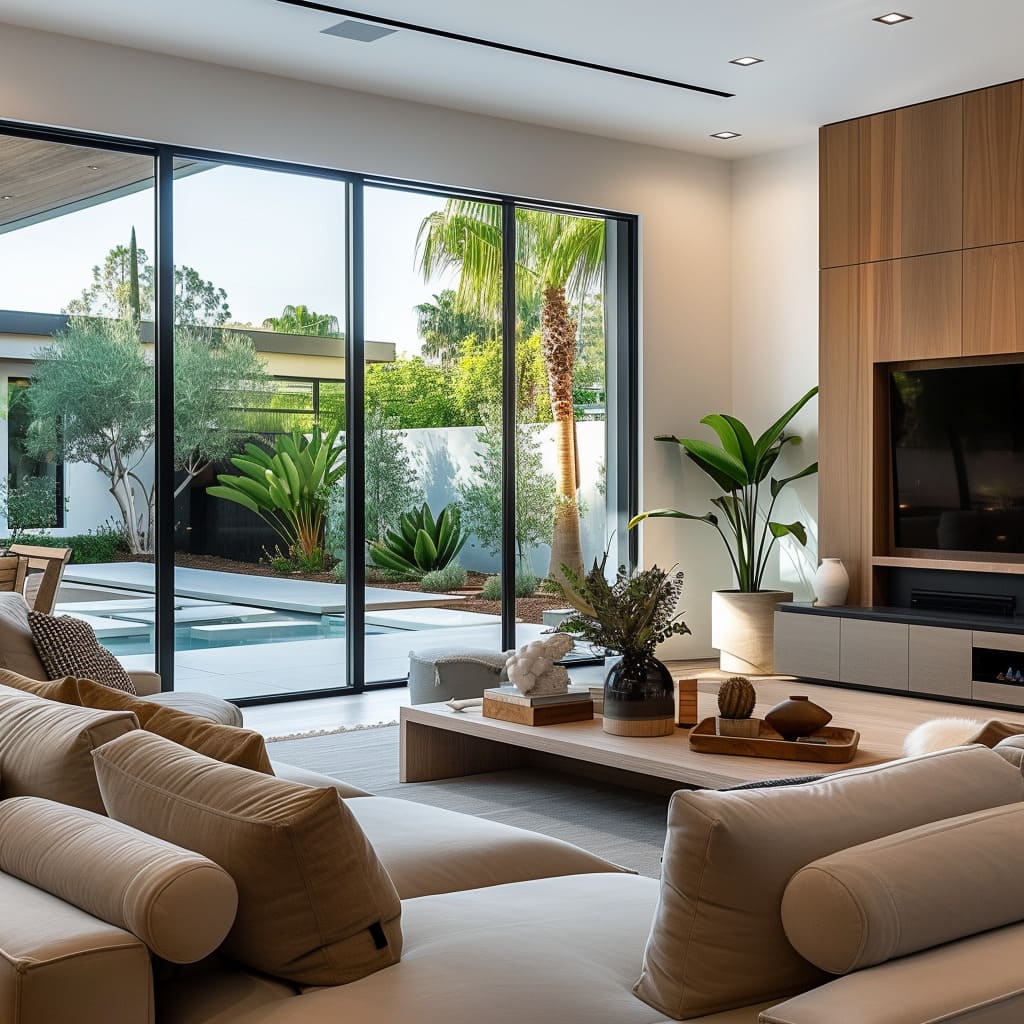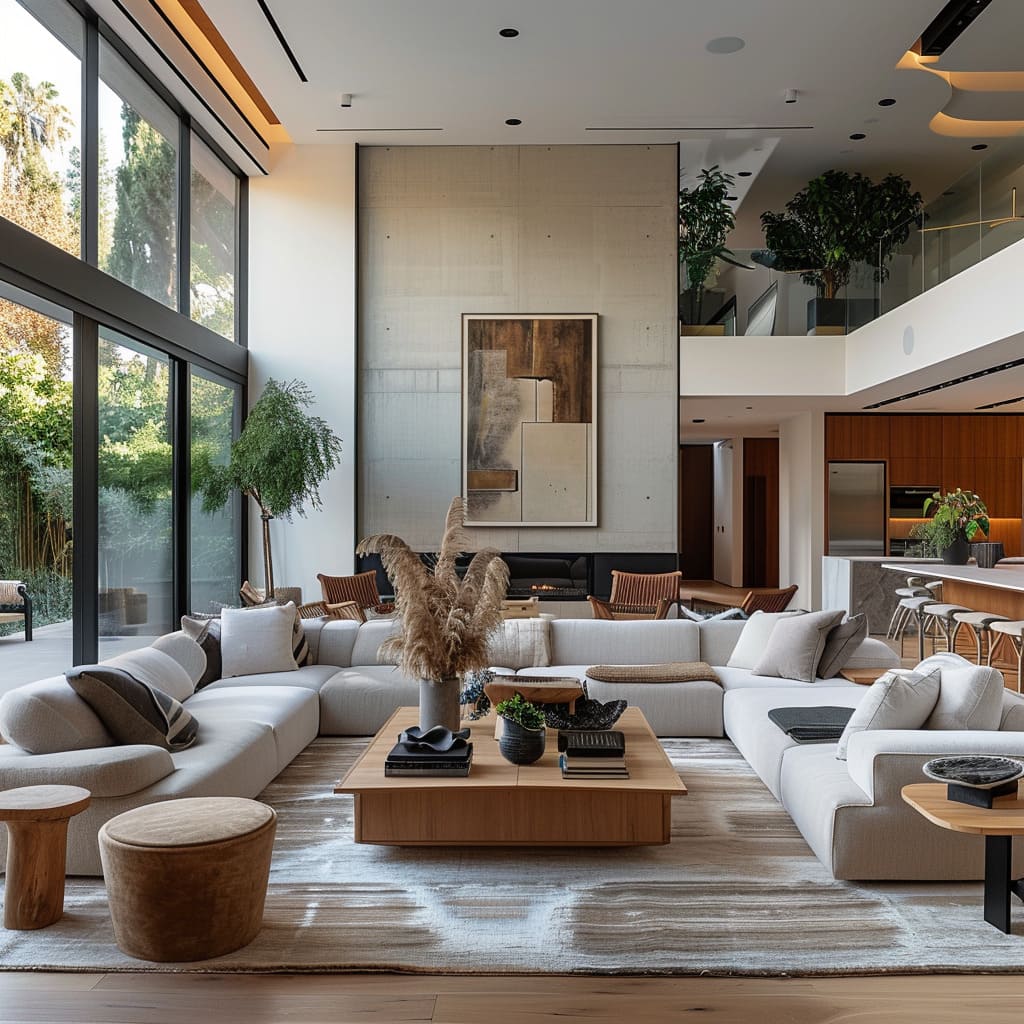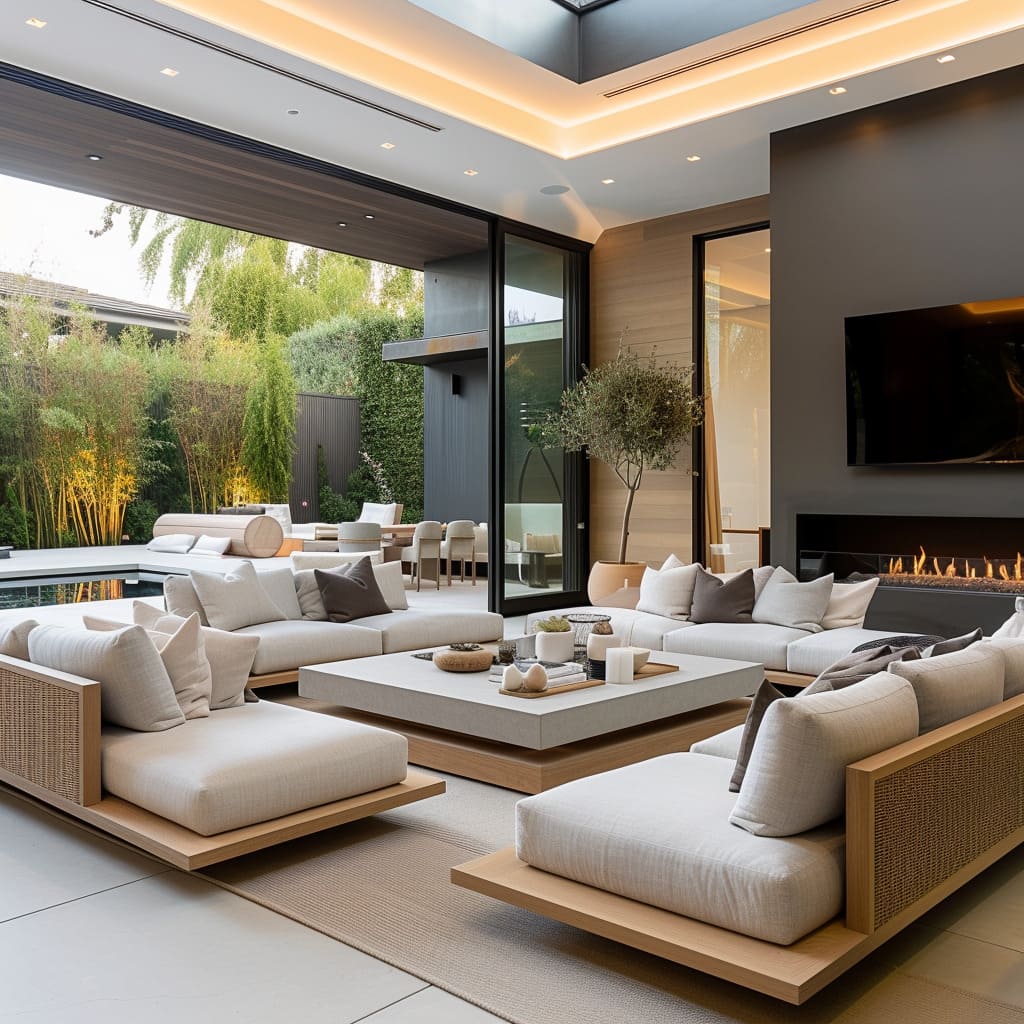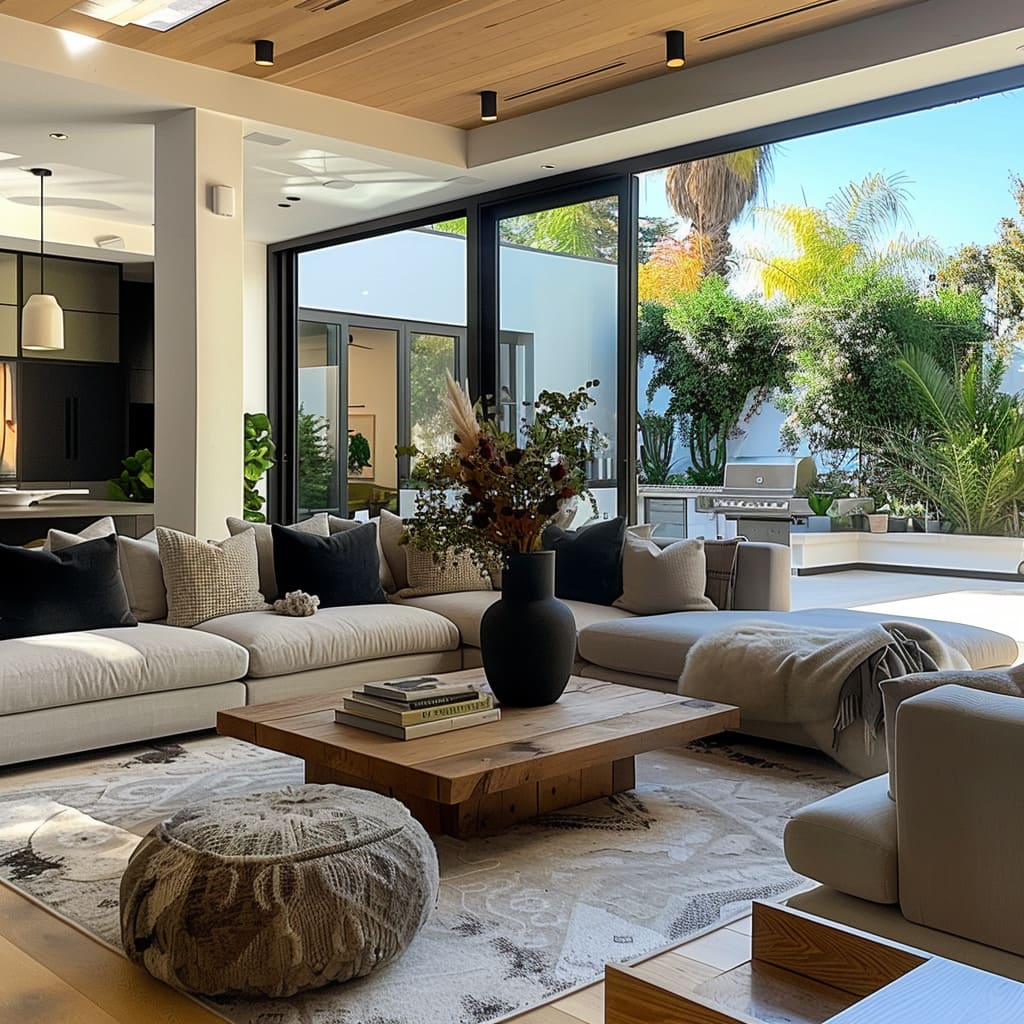In the tapestry of contemporary living spaces, the mastery of spatial dynamics is akin to a dance of design and practicality. It is an artful confluence of form, functionality, and fluidity that shapes environments, influencing not only how we inhabit our spaces but also how we feel within them.
This narrative unfolds through the strategic structuring of open floor plans and clever furniture placement, the seamless integration of indoor and outdoor vistas, and the unspoken dialogue between adjoining rooms. As we journey through this article, we unravel the subtle yet significant threads that weave together to create living spaces that are as expansive in feel as they are in form.
Spatial Dynamics
The orchestration of space is not just a matter of aesthetic placement but a strategic endeavor to create harmony and functionality. The concept of Spatial Dynamics stands at the forefront of contemporary design, where the fluid interplay of form, function, and visual access transforms living areas into an interconnected tableau of elegance and ease.
From the expansive embrace of open floor plans to the subtle demarcation of zones, each element is a deliberate stroke in the canvas of home design. Let’s explore how these dynamics play out to enhance the livability and beauty of modern spaces.
<h3>Open Floor Plans</h3> By minimizing walls and barriers, open floor plans create a sense of continuity and flow that makes each area seem larger and more connected. We notice the absence of unnecessary partitioning, which allows for a visual and functional blending of living, dining, and kitchen areas.
This not only enhances the aesthetic appeal but also encourages social interaction and a communal living experience. To achieve this in your own space, consider an open layout where each functional area transitions seamlessly into the next, using consistent flooring and harmonious color schemes to further unify the space.
<h3>Strategic Furniture Arrangement</h3> Placement of furniture is key; by ensuring there are clear paths and walkways, the room feels less crowded. Furniture is often floated away from walls, which can make the room seem larger.
Furniture is carefully positioned to facilitate easy movement and to create distinct functional zones without the use of dividing walls. For implementation, choose central positioning of couches and coffee tables to define seating areas, ensuring that each piece is proportionate to the space and maintaining a clear line of sight to adjacent areas.
<h3>Multi-functional Furniture</h3> Using furniture that can serve multiple purposes reduces the need for additional pieces, thus saving space. The designs show tables that double as storage units and couches that offer extra shelving.
In your home, opt for ottomans with storage inside, sofa beds for guest sleeping options, or nesting tables that can be spread out when needed and tucked away neatly.
<h3>Visual Access to the Outdoors</h3> Large windows or sliding doors that offer views to the outdoors extend the perceived boundaries of the interior. The interiors depict expansive glass panels that not only bring in natural light but also create a visual bridge to the outside world.
To incorporate this, maximize your window space and consider frameless or slim-frame designs that offer uninterrupted views, and align your indoor and outdoor design elements for a cohesive look.
<h3>Zoning</h3> Instead of using walls, different areas of a room are defined by area rugs or shifts in the furniture layout, preserving the open feel. The visuals show how area rugs underlay seating arrangements, delineating living spaces from dining or passage areas.
For practical application, use rugs to anchor furniture groupings and employ changes in lighting, like pendant lights over dining tables, to further define each zone.
<h3>Connection Between Rooms</h3> There is often a visual or thematic connection between adjacent rooms, which creates a feeling of expansiveness. In the provided designs, a consistent color palette and design motif flow from one room to the next, maintaining a visual coherence that enhances the perception of space.
To achieve this effect, carry a consistent theme, be it a color, material, or design style, throughout adjacent spaces to create a sense of unity and fluidity.
The Interplay of Color and Light in Modern Spaces
The essence of a room’s beauty often lies in its use of color and light, two elements that together shape the heart of interior design. Harnessing their potential can transform a simple area into a sanctuary of style and serenity.
The deliberate choice of neutral color schemes and reflective surfaces, combined with sophisticated lighting and the elegant drape of curtains, can dramatically alter the perception of space. Let’s delve into how these elements are masterfully used to create interiors that are not only aesthetically pleasing but also appear boundless and luminous.
<h3>Neutral Color Schemes</h3> Light and neutral color palettes reflect more light and give the feeling of airiness and space. Walls, ceilings, and floors in similar colors create a seamless space that appears expansive.
We observe a symphony of soft hues that do not overwhelm the senses but rather offer a canvas for natural light to play upon.
These tones act as a visual cleanser, removing boundaries and extending the walls beyond their physical limits. To implement this feature, choose shades like eggshell, light gray, or soft beige for large surface areas and add slightly darker tones through textiles or furniture for a layered effect without breaking the visual flow.
<h3>Mirrors and Reflective Surfaces</h3> Mirrors reflect light and views, which can trick the eye into perceiving more space. Reflective surfaces, like glass or polished metal, have a similar effect.
The living rooms showcase strategic placements of mirrors across from windows to double the natural light and scenery, effectively bringing the outdoors in. Similarly, glossy finishes on furniture or accessories can serve to bounce light around a room.
To enhance the spaciousness in your own home, consider installing a large mirror on a focal wall or using metallic accents that serve as both functional items and decorative pieces that open up the space.
<h3>Lighting</h3> Proper lighting can open up a space. Use of layered lighting with a combination of ambient, task, and accent lights can highlight various parts of the room, making it feel larger.
The designs illustrate a mix of overhead, floor, and table lighting, creating a warm and inviting ambiance that also defines different areas of the room. By using dimmers and varying light intensities, you can alter the atmosphere and perceived dimensions of the space.
Incorporate a mixture of light sources at different levels and intensities to give depth and contour to your rooms.
<h3>Flowing Curtains</h3> Long, flowing curtains can make windows seem larger and ceilings higher, contributing to the sensation of a more expansive space. Curtains are hung well above the window frame, drawing the eye upward and creating an illusion of loftiness.
The fabric chosen is often lightweight, which does not visually weigh down the room. To achieve this in your interior, select curtains that extend beyond the window frame in both width and height, preferably in a light-filtering fabric that complements your neutral color scheme, and hang them as high as possible to elongate your walls.
Design and Decor
In the architecture of interior spaces, design and decor are the vital components that dictate the narrative of comfort, style, and space. These elements are the building blocks that when meticulously chosen and thoughtfully placed, can transform an empty shell into a story of visual poetry.
With an eye for detail and a penchant for balance, let’s navigate through the nuances of selecting the right pieces, textures, and arrangements to compose a space that resonates with the sophistication of modern design while offering the warmth of a home.
<h3>Furniture with Clean Lines</h3> Sleek, simple furniture with clean lines doesn’t interrupt the eye, allowing for a smoother visual transition throughout the space. The designs highlight furnishings with a modern aesthetic, devoid of ornate details that can crowd visual space.
This simplicity in design enhances the openness of a room. To integrate this into your space, select pieces that boast straight lines and a streamlined form, ensuring they complement rather than dominate the room.
<h3>Use of Scale</h3> Large pieces of furniture can make a statement and anchor a room without the need for many smaller items, which can contribute to a cluttered look. We see large sectionals and substantial coffee tables that define the living areas while maintaining an uncluttered aesthetic.
When choosing furnishings for your space, opt for a few well-chosen large items rather than many smaller ones, to maintain a sense of scale and openness.
<h3>Cohesion in Design Elements</h3> Using a consistent design language or theme throughout the space can tie everything together, creating a unified space that feels orderly and spacious. The interios show a harmony of materials and finishes that weave through each room, creating a cohesive narrative.
To achieve this in your own home, select a palette of finishes and materials and carry them through the space, from furniture to accessories.
<h3>Maximizing Vertical Space</h3> High ceilings are emphasized with decor elements that draw the eye upwards, such as tall plants or vertical artworks, making the room feel more voluminous. The designs use tall indoor plants and artwork that accentuate the height of the rooms.
To utilize vertical space effectively, consider tall shelving units or artwork that reaches towards the ceiling, which can elongate the walls and increase the sense of space.
<h3>Strategic Use of Texture</h3> While maintaining a minimalist approach, varying textures can add depth and dimension without taking up physical space. The visual textures come from throws, rugs, and pillows, which add a tactile dimension to the rooms.
Introduce a variety of textures through soft furnishings and wall treatments to add interest and warmth without clutter.
<h3>Decluttered Surfaces</h3> Surfaces such as tabletops and counters are kept mostly clear, with only a few carefully chosen items on display. We see clean and uncluttered surfaces that contribute to a calm atmosphere.
Keep your surfaces clear of unnecessary items, choosing instead a select few pieces that are both beautiful and functional.
<h3>Transparent Elements</h3> Use of transparent materials, like glass or lucite, in furniture and decor can give a lighter, airier feel. The living rooms showcase glass tabletops and lucite accessories that maintain the visual flow.
Incorporating transparent elements in your furniture or decorative items can preserve sight lines and contribute to a feeling of openness.
<h3>Unified Flooring</h3> Consistent flooring materials throughout the home can make the space feel continuous and unbroken. The flooring extends throughout the space, enhancing the sense of unity.
Choose a flooring material that you can use throughout your home to unify the space, ideally in a neutral color that complements your overall design scheme.
<h3>Accent Walls</h3> Instead of breaking up space with multiple focal points, a single accent wall can draw the eye and create a sense of depth. The designs show accent walls in muted tones that serve as subtle focal points.
Select one wall to highlight in a different texture or color that stands out yet complements the rest of the room.
<h3>Scale of Artwork</h3> Large-scale art pieces can actually make walls seem bigger and contribute to the overall sense of space. The artwork commands attention and anchors the room without overwhelming the space.
Choose statement pieces of art that can serve as a focal point for your room, keeping in mind the scale of the wall they will inhabit.
<h3>Balance and Proportion</h3> The balance between filled and empty spaces is carefully managed to ensure the room feels complete without feeling overstuffed. The rooms reflect a strategic placement of furniture and decor that creates a harmonious environment.
Aim for a layout that allows each piece of furniture and decor to breathe, assigning ample space around them, avoiding overcrowding, and maintaining a clear visual balance.
The thoughtful consideration of spatial dynamics within interior design transcends mere aesthetic appeal, forging spaces that resonate with the rhythm of daily life. It is a meticulous blend of openness and connectivity, of lightness and visual continuity, that culminates in homes that breathe and inspire.
Through the lens of the living spaces presented, we have witnessed how the deliberate choices of design elements—from the broad strokes of open layouts to the intricate details of color and light—craft interiors that embody both elegance and ease. In embracing these principles, we empower ourselves to create not just houses, but homes that are reflective of our essence and conducive to our well-being.

